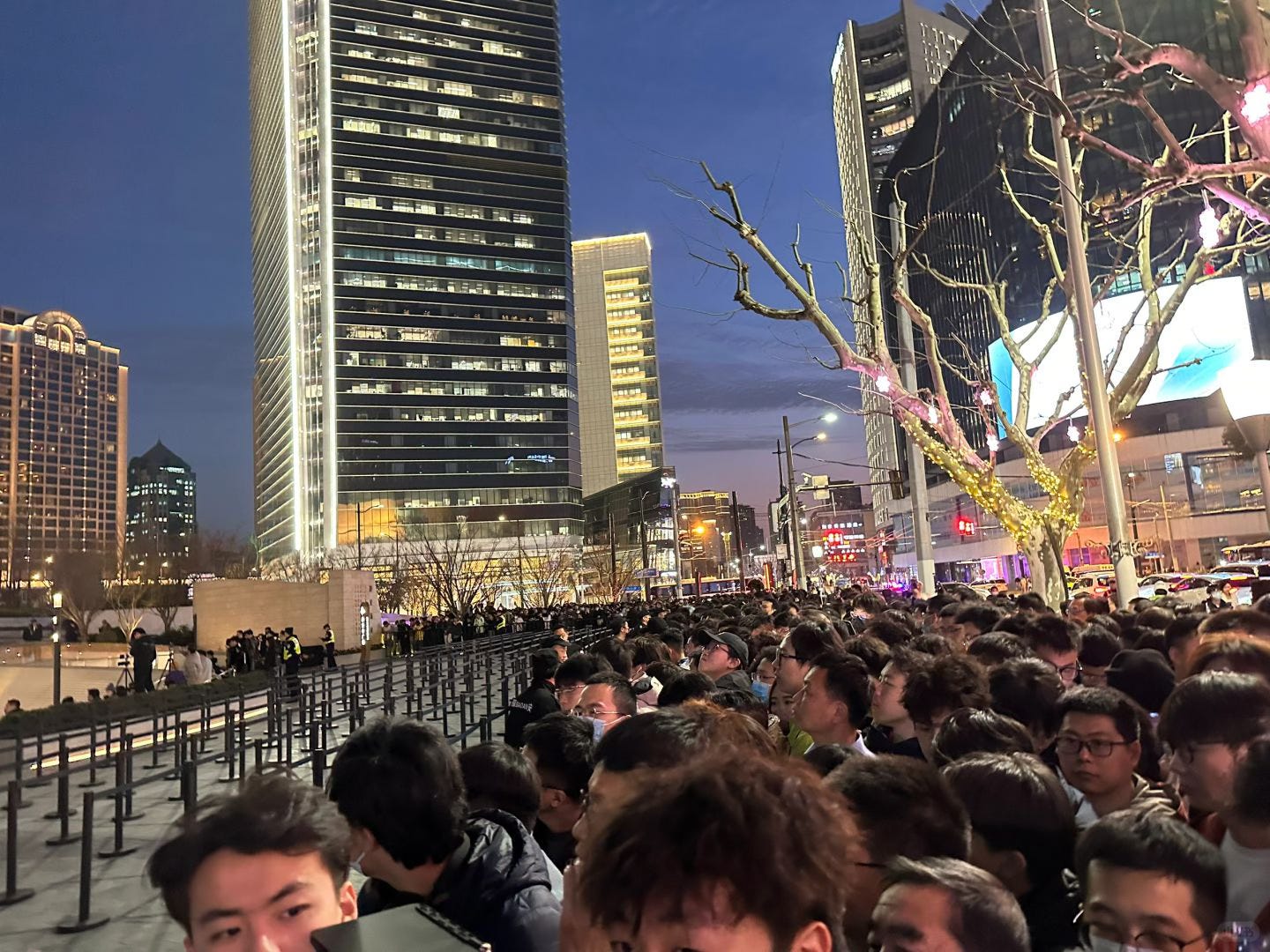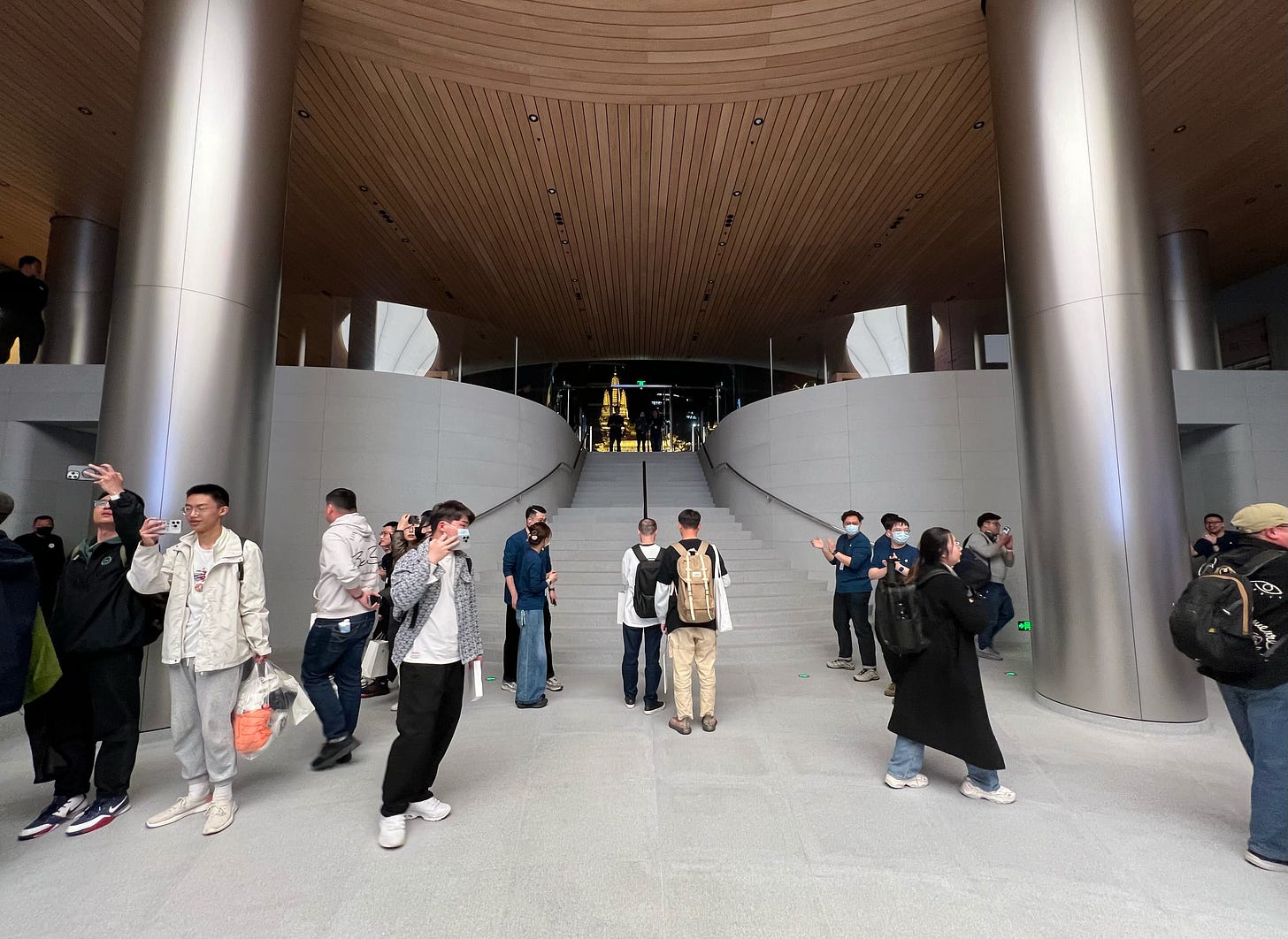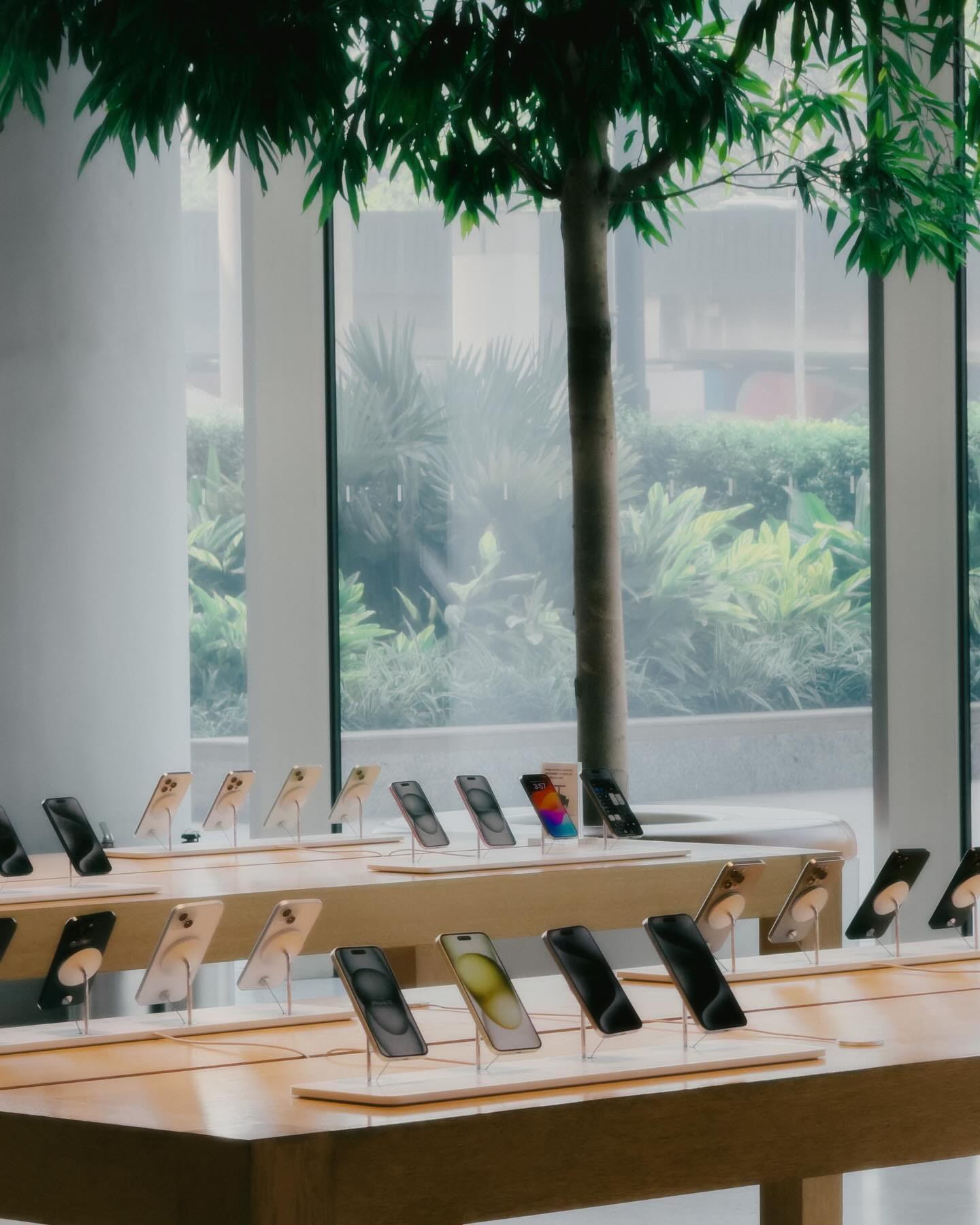Ever since a crowd spilled out into the parking garage at Glendale Galleria in May 2001, waiting in line has been a cornerstone of the Apple Store experience.
The waiting game is a bit of a puzzler. It sounds preposterous to suggest that one of the most memorable experiences you can have at an Apple Store happens on the sidewalk outside the front door, but if you’ve attended an opening, you know it’s true.
I’ve made new friends at store openings, met online friends in person for the first time, and felt a true sense of community it’s hard to find anywhere else. That pattern of fun and excitement has repeated itself more than 700 times over the past 23 years, proving itself one of the most enduring traditions in the Apple community. So it was with great surprise that on March 21 at Apple Jing’an, the opening day celebration seemed to buckle under the weight of its own heritage.

Out of four friends I spoke with who attended the opening of Apple Jing’an, just one managed to get inside the store on opening day. Tabletops readers are some of the most dedicated Apple Retail fans, so if they couldn’t make it through the line, who did? The answer is disappointing: profiteers.
The grand opening queue was split across four distinct areas: the sunken plaza, the trees on the square, a long cluster of stanchions near the road, and a circular array of barricades above the store. Apple Jing’an opened at the unusual time of 7 p.m., which allowed a line to form much earlier than usual.
Around 6 a.m. on opening day, people were allowed to enter Apple’s official queue. Soon, the sunken plaza filled with “aunties” and “uncles” — Chinese colloquial names for retirees who are hired to collect and resell free goods at every public event they can. This is especially common in Shanghai, I’m told. These resellers have no special affinity for Apple or store openings, but they have plenty of time to stand in lines.
By 11 a.m. — 8 hours before the opening — Apple was forced to close the queue as hundreds of people continued to line up and fill the square. Shouting and pushing sporadically broke out on the sunken plaza, where resellers were defending their spots in line. Fans were turned away by the police, and the circular queue and stanchions near the road remained unused, as filling them would’ve surely caused chaos.

It took until 8 p.m. for the sunken plaza and the queue near the trees to empty into the store. Fans waiting at the roadside, distant from the store and any Apple presence, were left at the hands of police officers, who, without an explanation, attempted to sternly disperse the crowd. This had little effect.
At 8:40, Apple switched off the lights on the plaza level of the store and closed early. I assume this was a good faith effort to discourage an even larger crowd from gathering, though it was also done without explanation. Customers inside the store were ushered out through the entrance connecting to the Shanghai Metro.

By most metrics, opening day was still a success, and I don’t share the chaos in the plaza to cast Apple in a poor light. I’m sharing the story with you today because for the dedicated fans left waiting outside, the event was incredibly demoralizing. And the kind of goodwill Apple’s biggest fans share can’t be bought. Many went home without seeing the store, meeting Tim, or collecting a tote bag. Meanwhile, Xianyu, the Chinese equivalent of eBay, quickly filled with Apple Jing’an gear. Some profiteers have even taken to making fake bags, a strategy I’ve never seen before.
I think Apple simply underestimated the crush of resellers that descended upon Shanghai’s first store opening since 2016 and sent the event into a tailspin. Changing culture, social media trends, and Covid have reshaped the dynamics of public events.
It’s easy for me to imagine how a U.S.-based company like Apple might be surprised by a scene like Jing’an. At the high profile openings of Apple Fifth Avenue (2019), Carnegie Library, and Tower Theatre — the last of which opened during the summer of pandemic “revenge travel” — showing up an hour or two before the doors opened was enough to score a good spot in line. There was no chaos, very few if any resellers, and many, many happy photos with Tim.
The geographic discrepancies in store opening culture have fascinated me since my earliest days studying Apple Retail. During my time at 9to5Mac, I was contacted more frequently by Apple fans in South Korea, Japan, and China than by readers in the publication’s home country. It was often easier to source store photos from across the globe than in my own backyard. And today, Facades usage in Asia outpaces the rest of the world combined, despite my limited opportunities to promote it there.
Read Gary Allen’s early writing at ifoAppleStore or browse the treasure trove of early openings on the Torborg blog, and you’ll notice a near inverse relationship between the number of stores in North America and people’s enthusiasm to attend an opening. Unbridled optimism for the power and potential of new technology has faded in the U.S. since the early iPhone days, while customers abroad seem less jaded.
Apple has always made region-specific store opening accommodations — stores in Asia employ wristbands and overnight queuing areas, for example — but the Apple Jing’an opening might be the bellwether of more significant change.
Scalpers are so antithetical to the opening day spirit. If making room for the fans means eliminating souvenirs entirely, it’s worth it. While writing this article, a reader reminded me of the 2015 opening at Apple West Lake, where crowd concerns compelled Apple to withdraw the t-shirts it had prepared. The opening proceeded without a hitch. Gift or no gift, they said, it was “an incredibly unforgettable experience.”
Featured image
Apple BKC
Photo via @milindbedwa.



speaking of Facades usage being the highest in Asia, I would love the opportunity to help you translate your app into Korean if you are interested!